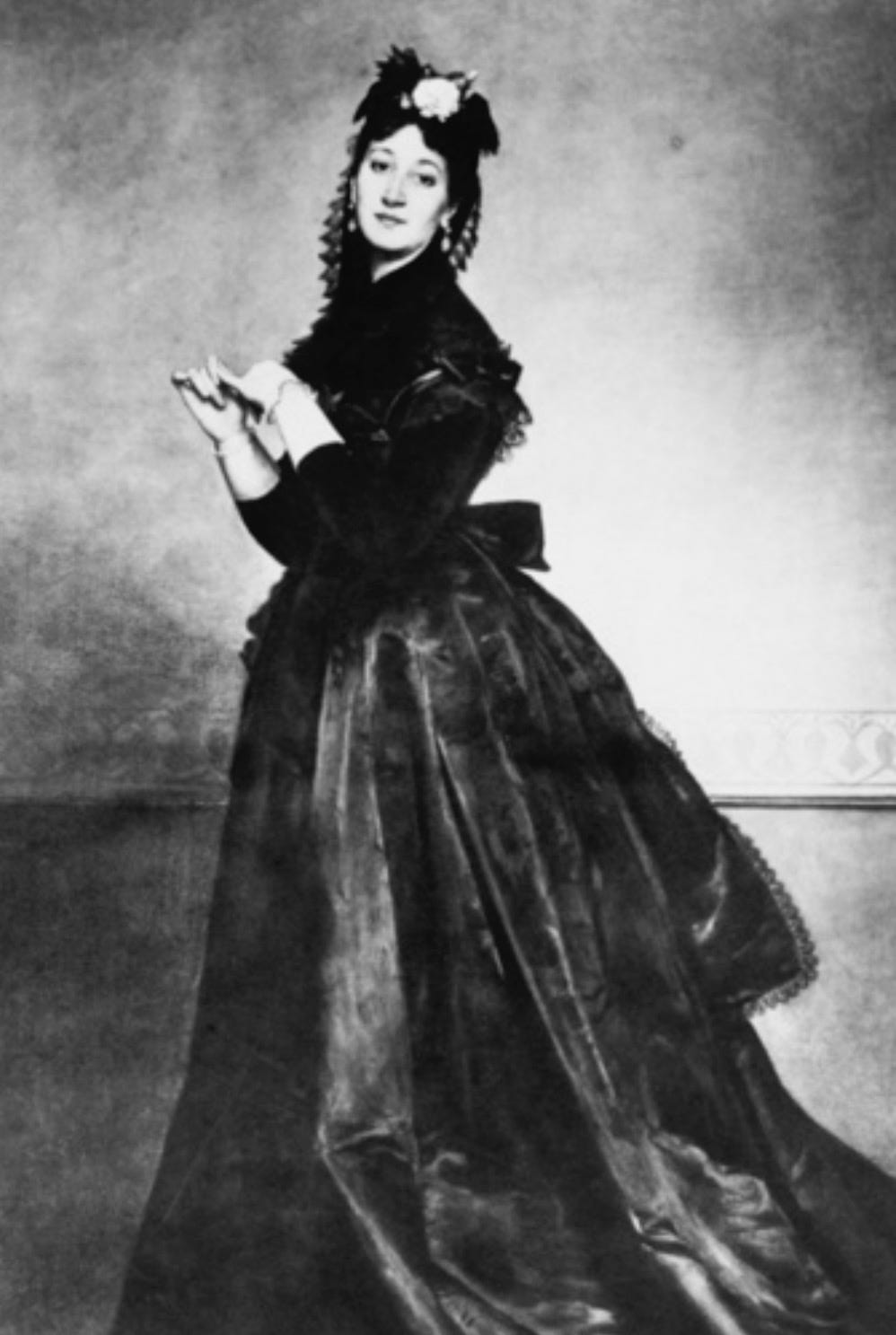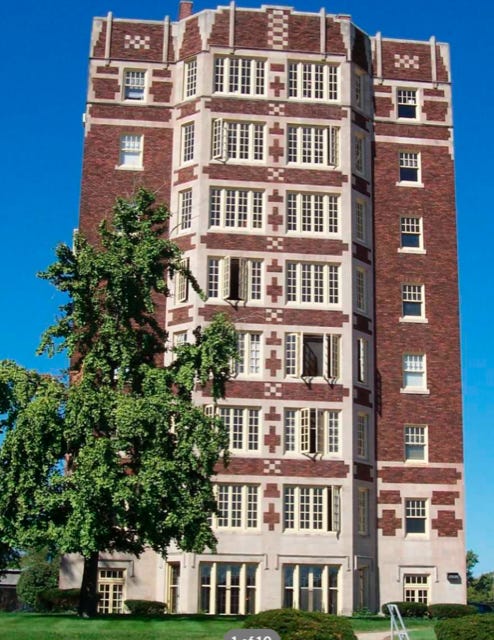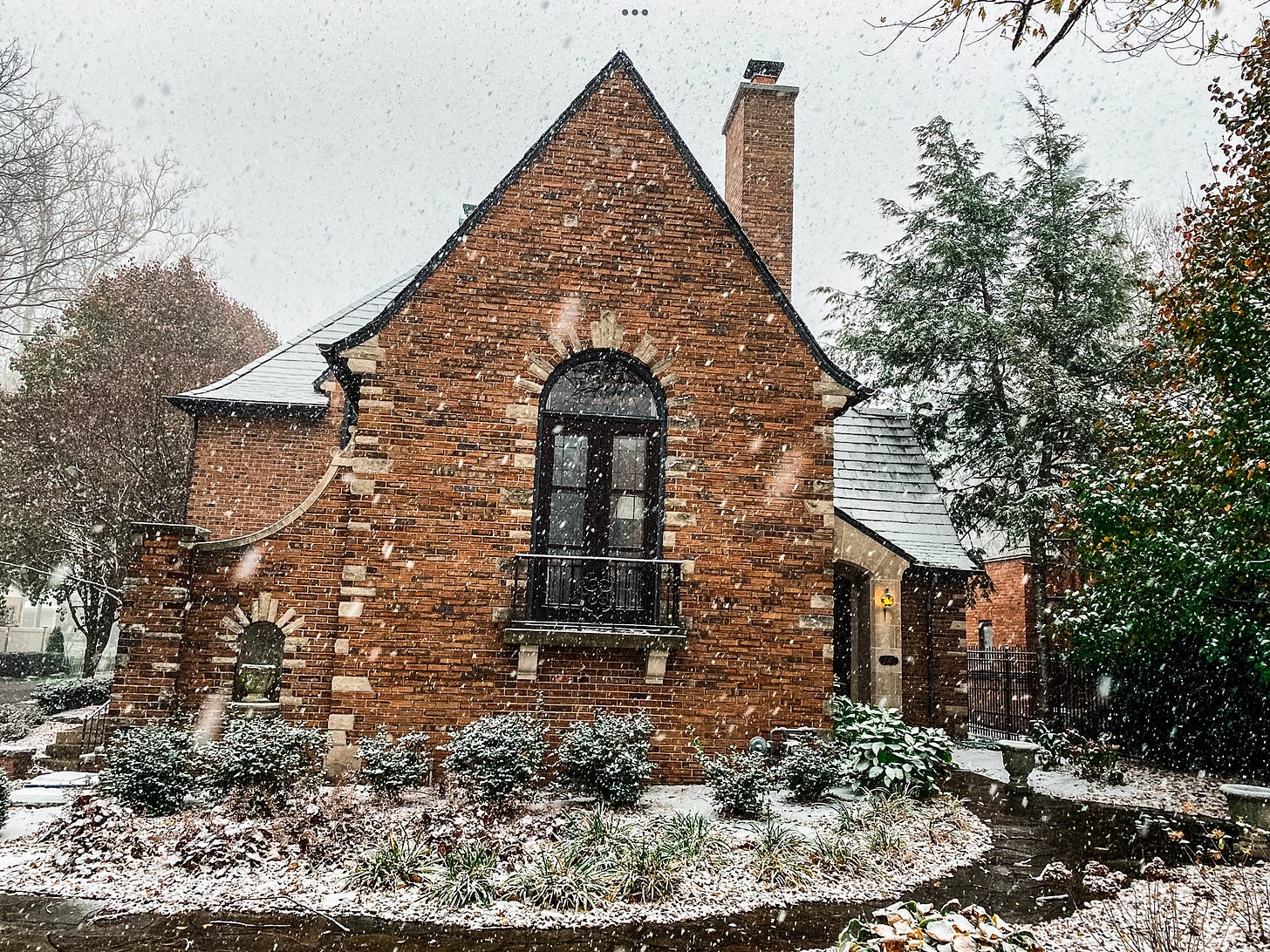The bride wore a white satin empire gown, a Juliet cap of rose point lace and a tulle veil fastened with orange blossoms. In what the society page called “one of the prettiest of the early summer weddings,” twenty-one-year-old Phyllis Mahlon Payne carried a lace handkerchief that her mother had used in her own ceremony.
It was June 6, 1931. Despite a persistent evening rain, life couldn’t get much better for Phyllis and her new husband, Theodore Jerome Fransen Van Gestel. Theodore’s mother, a Baroness, wore a black lace gown with a corsage of gardenias. Even six months later, in a New Year’s Day retrospective, “The Indianapolis Times” would label the wedding “a social event of the season.”
Those of you who are regular readers of my 5 a.m. Stories will recognize the Fransen Van Gestels. The groom’s late father, a Dutch Baron, had witnessed the catastrophic 1883 eruption of Krakatoa, in what is now Indonesia, killing 36,000 people. He became somewhat famous for surviving that.
(Baroness Anna Louise Fransen Van Gestel, courtesy Indiana Historical Society)
The groom’s mother, Anna Louise Fransen Van Gestel, had been a Shakespearean actress in the late 19th century, retiring around 1900 when she wed the Baron and gave birth to baby Theodore. As a widow, in the late 1920s, she and her son were the first occupants of a new and insanely charming Tudor Revival home on historic North Meridian Street, in Indianapolis.
I am familiar with that bewitching home because my wife and I now live there, which is how I developed an interest in this family. The Baroness died in the house, and she still walks the halls at night, playing her accordion and doing the New York Times Spelling Bee when it drops at 3 a.m.
I guess this is a story about how nothing stays the same, and you just never know which way things are going to go.
Considering this was the Great Depression, Phyllis Payne’s family was doing okay. Her engagement and wedding stories all mentioned that the Paynes lived at 3060 North Meridian. That would be The Drake, which was the newest and snazziest apartment building in Indianapolis.
(The Drake)
The Drake was a straight shot up Meridian Street from the powerhouse Indianapolis Athletic Club, where the razzle-dazzle wedding reception would be held, and it was three miles south of the Baroness’ charming gingerbread home.
With just a 15-minute drive along the grand and leafy boulevard between them, the two families could visit one another, without ever leaving Meridian, the so-called “main stem” of Indy.
After the reception, the happy couple motored off for a honeymoon in Croton-on-the-Hudson, N.Y., but If you want this to be a fairytale story, maybe you should stop reading now.
Phyllis Van Gestel would soon go back to her maiden name, and in 1935 – after just four years of marriage - the couple would officially call it quits.
Phyllis would bounce around from city to city, always making time to visit her folks back at The Drake. We know this because in those days, when the offspring of prominent residents came home for a visit, it made the society columns.
In 1943, with World War II raging, Phyllis enlisted to become a WAC. She never remarried, and she died in 1959.
The groom would wed one more time, in 1938, marrying a woman named Jane Elizabeth Leveque in what must have been the most low-key ceremony of the season. There isn’t even a record of floral arrangements or mention of a sentimental handkerchief.
Theodore also got caught up in World War II, serving in the Air Force. He saw action in the South Pacific, was injured in New Guinea and earned three bronze stars and a Purple Heart.
Theodore and his second wife had a son, Noel, who died in an unspeakably tragic playground accident in Virginia, in 1956. Noel was six years old, and he would have been – should have been – 73 years old, now.
Theodore died in 1960 and is interred with Noel at Arlington Cemetery.
The end of the Van Gestel family line. Everybody gets off here.
The Baroness missed her son’s second wedding, having died in 1934. It could not have been a happy last few years, watching Theodore’s marriage fall apart and apparently having him move back in with her. After all, this was a woman who had enchanted audiences on two continents and had married into a grand title.
Her house - our house - was designed with a Juliet balcony off the living room. The neighbors called it the “Juliet House,” and I like to think the Baroness enjoyed stepping out there occasionally to offer passers-by a little of her Gertrude, from “Hamlet,” the part for which she was most applauded.
If she closed her eyes and squinted out on the balcony, the headlights from the speeding Meridian traffic might become the stage’s footlights just one more time.
Do not forever with thy vailèd lids
Seek for thy noble father in the dust.
Thou knowst ’tis common: all that lives must die,
Passing through nature to eternity.
— Gertrude
The Baroness died of the flu, but according to her death certificate, cirrhosis was also a factor. Prohibition had recently ended, and I imagine there was plenty of cirrhosis going around.
The house the Baroness left behind remains charming, and its present occupants are about to celebrate their 52nd anniversary.
The Indianapolis Athletic Club, site of the glitzy wedding reception, has been converted to very high-end and stylish condos. Outside, it still looks the same as it did on that rainy June evening in 1931.
And the Drake, the ultimate symbol of luxury apartment living back in 1931? It is vacant now, and the years have not been kind. The city recently announced plans to turn it into affordable housing.
As I said, you just never know which way these things are going to go.








What a colorful slice of history, and what a charming home. Happy anniversary to both of you!
A walk down history's tragedy scattered lane, now a busy throughway. Thanks, Bob, for the whole story, told in your own magnificent literary style.